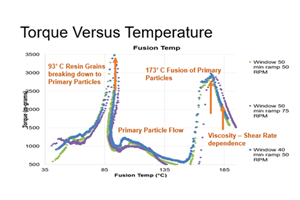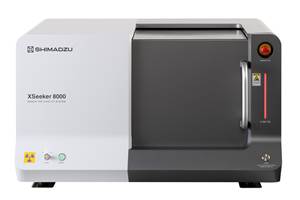Laser Scanning Saves Time and Money for Digitizing Parts and Molds
Blow molded product designers and moldmakers are finding laser scanning to be a fast, accurate, and cost-effective method to replicate molds and create new designs for highly contoured and complex parts such as beverage bottles.
Blow molded product designers and moldmakers are finding laser scanning to be a fast, accurate, and cost-effective method to replicate molds and create new designs for highly contoured and complex parts such as beverage bottles. In blow mold manufacturing, laser scanning has emerged as an effective tool for digitizing models or prototypes, finished parts, and mold cavities. It also affords an advantage over coordinate measuring systems because it can acquire millions of data points quickly.
Reverse engineering
GKS Inspection Services, div. of Laser Design, Inc., is one of the leading laser-scanning service bureaus in North America. The company has worked closely with many plastics companies to provide reverse-engineering services whereby a 3D computer model is created from digital measurement of a physical model, finished part, or mold cavity. Laser scanning is useful in instances where manufacturers simply want to produce a new mold for an existing bottle that was created without the use of CAD. For inspection of finished parts, laser scanning is also used to determine whether parts match the original CAD model, product specifications, and/or regulatory requirements.
Uniloy Milacron, a supplier of blow molding equipment and molds, adopted laser scanning to overcome the limitations of coordinate measuring machines (CMMs), according to Jim Janeczek, Uniloy product design engineer. A CMM utilizes touch sensors to record each point along a surface. It is a much slower approach that provides much less data than laser scanning, according to GKS.
As blow molded part and tool geometries become more complex, the number of data points required for accurate measurement has increased exponentially. According to GKS, millions of points are required to accurately model complex bottle geometries. For such parts it now takes days to capture points one by one with CMM. In addition, CMM units are quite expensive, costing up to $250,000.
More data faster
Laser scanners project a line of light onto surfaces while cameras continuously triangulate the changing distance and profile of the laser scan line as it sweeps over the contours of the object. The laser probe has two sensors that can record up to 50,000 data points per second compared with a touch probe-based CMM that records about 1 point/sec. As a non-contact system, laser-scanning results are independent of the skill of the operator.
The first part that Uniloy sent to GKS for scanning was a dairy bottle for which the customer wanted a new mold. The 16-oz bottle was too soft to digitize accurately with a CMM touch probe.
GKS’s laser scanner generated a “point cloud” of millions of data points with each point accurate to within 20 microns. The surfaces generated from the point cloud were accurate to within 0.004 in., according to Larry Carlberg, GKS service bureau manager.
The point cloud was converted to a CAD surface model. The entire process took two days and cost less than $1500. “Laser scanning substantially improved the accuracy with which we can duplicate our customer’s geometry, and the cost and lead time of this new technology is substantially less than the contact-probe CMM technology it replaced,” says Uniloy’s Janeczek.
Uniloy has sent about a dozen other physical models or finished containers to GKS for digitizing. Another example was a 2-liter dairy container that was created by a modeler using hand tools. The model had many subtle details that were invisible to the naked eye but could be felt with bare hands. Uniloy was able to verify the details by comparing the CAD model to the physical model.
Related Content
Try This Alternate Method for Heating Your Torque Rheometer
Rheometers are generally not on all the time. And most users have found that the first test run in the instrument after heating up is not very reliable and is usually discarded. Try this method instead.
Read MoreComprehensive Optical Inspection for PET Preforms
Delta Engineering teams with Intravis to inspect preform mouth, body, thread and color.
Read MoreFast, Simple QC Method Directly Quantifies Recycled Content in Plastics
Novel fluorescence-based spin-out technology provides a rapid and reliable method to measure and certify recycled content in a wide range of plastics.
Read MoreX-Ray Vision Inside Parts Gets More Affordable for Processors
Shimadzu’s new benchtop x-ray CT scanner provides internal and external metrology and flaw detection at a fraction of the previous cost.
Read MoreRead Next
Why (and What) You Need to Dry
Other than polyolefins, almost every other polymer exhibits some level of polarity and therefore can absorb a certain amount of moisture from the atmosphere. Here’s a look at some of these materials, and what needs to be done to dry them.
Read MoreHow Polymer Melts in Single-Screw Extruders
Understanding how polymer melts in a single-screw extruder could help you optimize your screw design to eliminate defect-causing solid polymer fragments.
Read MoreProcessor Turns to AI to Help Keep Machines Humming
At captive processor McConkey, a new generation of artificial intelligence models, highlighted by ChatGPT, is helping it wade through the shortage of skilled labor and keep its production lines churning out good parts.
Read More
























